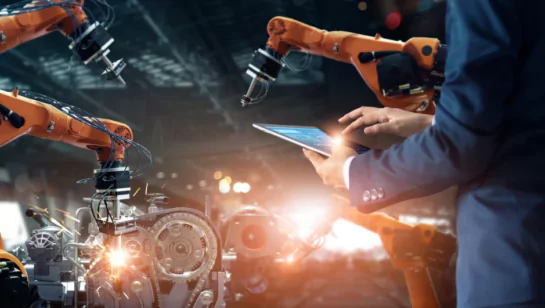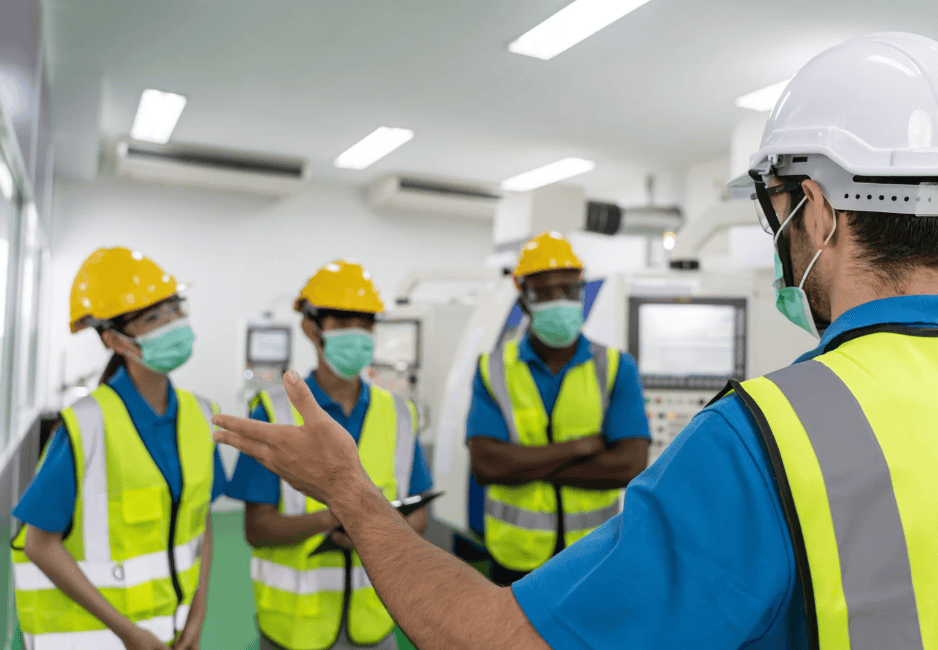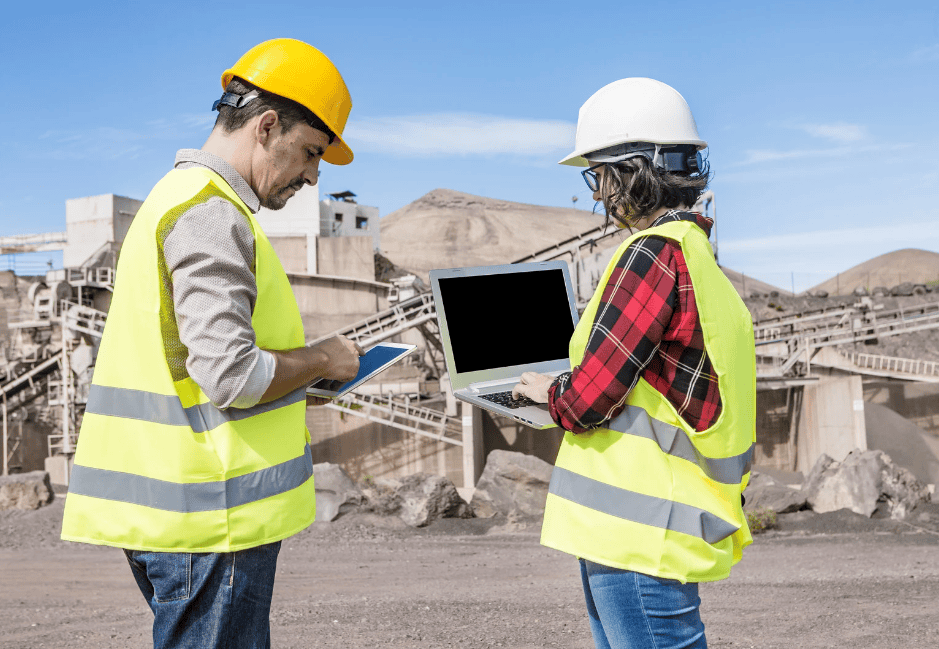Imagine a mine where machines work alongside miners, where data drives decisions, and where safety and efficiency meet innovation. The world of modern mining technology is transforming rapidly, paving the way for IT Service Providers smarter operations, sustainable practices, and unprecedented productivity gains. Let's delve into the exciting trends shaping the future of mining technology today.
Historical Perspective
Mining has been an integral part of human civilization for centuries. From the early days of manual labor and basic tools, the industry has witnessed remarkable advancements in technology. In ancient times, miners relied on hand tools and brute force to extract valuable resources from the earth. As civilizations progressed, new techniques such as underground mining and the use of animals for labor emerged.
The Industrial Revolution marked a significant turning point in mining technology. Steam-powered machinery, such as steam engines and drills, transformed mining operations and increased productivity. With the advent of electricity in the late 19th century, mining equipment became more efficient and safer, leading to further advancements in the industry.

Importance of Technological Advancements
Technological advancements have played a crucial role in improving the efficiency, safety, and sustainability of mining operations. Here are some key reasons why these advancements are important:
- Increased Productivity: Modern mining technology allows for faster and more efficient extraction of minerals. Advanced machinery, such as hydraulic shovels and automated conveyor systems, can handle large volumes of material, reducing the time and labor required for mining operations.
- Improved Safety: Mining can be a hazardous industry, but technological advancements have significantly enhanced safety measures. Innovations such as remote-controlled equipment and sensor-based technologies help reduce the risk of accidents and protect workers from potentially dangerous situations. advancements in worker safety.
- Environmental Considerations: Sustainable mining practices have become increasingly important in recent years. Technological advancements have enabled the development of environmentally friendly mining techniques. For example, advancements in drilling and blasting techniques minimize the impact on surrounding ecosystems, while advanced wastewater treatment systems help reduce water pollution.
- Cost Reduction: Efficient mining technology helps reduce operational costs by optimizing processes and minimizing waste. By utilizing automated systems and data analytics, mining companies can make informed decisions that lead to improved profitability.
As mining technology continues to evolve, the industry is poised to become even more efficient, sustainable, and safe. Future trends, such as the integration of virtual reality and artificial intelligence, hold immense potential in further enhancing mining operations.
Automation in Mining
As technology continues to advance, the mining industry is embracing automation to improve efficiency, productivity, and safety. Automation in mining involves the implementation of robotics and automated systems to streamline operations and reduce the reliance on manual labor.
Implementation of Robotics
Robotic systems are being increasingly integrated into mining operations, revolutionizing traditional mining practices. These robots are designed to perform tasks that are repetitive, dangerous, or require precision. They can operate in challenging environments, such as underground mines or remote locations, where human presence may be limited.
Robotic systems in mining can be utilized for various purposes, including:
- Drilling and Blasting: Autonomous drilling rigs equipped with advanced sensors and algorithms can accurately and efficiently drill holes for blasting, minimizing human error and ensuring precise results.
- Material Handling: Robotic trucks, loaders, and conveyor systems can autonomously transport and transfer materials throughout the mining site, reducing the need for manual labor and enhancing operational efficiency.
- Inspection and Maintenance: Robotic drones and crawlers equipped with cameras and sensors can inspect equipment, identify potential issues, and perform maintenance tasks in hazardous or hard-to-reach areas, improving safety and minimizing downtime.
Benefits of Automated Systems
The implementation of automated systems in mining brings several benefits to the industry:
- Increased Efficiency: Automated mining systems can operate 24/7 without the need for breaks, resulting in continuous production and improved efficiency. They can also perform tasks at a faster pace, reducing the overall time required for mining operations.
- Enhanced Safety: By replacing human workers in hazardous environments, automation reduces the risk of accidents and injuries. Robots can handle potentially dangerous tasks, such as working in confined spaces or operating heavy machinery, minimizing the exposure of workers to risks.
- Improved Accuracy and Precision: Automated systems are designed to perform tasks with high precision and accuracy. This ensures consistent quality in mining operations, leading to better ore extraction and reduced waste.
- Optimized Resource Utilization: Robotic systems can optimize the use of resources by reducing energy consumption, minimizing material waste, and improving the extraction of valuable minerals. This contributes to sustainable mining practices and cost savings.
- Data Collection and Analysis: Automated systems generate vast amounts of data during mining operations. This data can be analyzed using big data analytics and predictive analytics to identify patterns, optimize processes, and make informed decisions for improved productivity and profitability.
Automation in mining is a growing trend that continues to transform the industry. As robotics and automation technologies advance further, mining operations are likely to become more efficient, safer, and sustainable.

Data Analytics and Mining
With the rapid advancement of technology, mining operations have been revolutionized by the integration of data analytics. By harnessing the power of big data and predictive analytics, mining companies can optimize their operations, increase efficiency, and make informed decisions.
Utilizing Big Data
In the mining industry, vast amounts of data are generated from various sources such as sensors, equipment, geological surveys, and production records. This data, known as big data, holds valuable insights that can be leveraged to improve mining processes.
By collecting and analyzing big data, mining companies can gain a deeper understanding of their operations. They can identify patterns, trends, and correlations that may not be immediately apparent. This data-driven approach enables them to make data-backed decisions, optimize workflows, and enhance overall productivity.
To effectively utilize big data, mining companies employ data management systems that can handle the massive volume, velocity, and variety of data. These systems enable them to store, process, and analyze data in real-time, providing actionable insights to improve operational efficiency.
Predictive Analytics in Mining Operations
Predictive analytics is a powerful tool that allows mining companies to forecast future outcomes based on historical data and statistical models. By applying advanced algorithms to big data, mining companies can anticipate potential issues, optimize processes, and make proactive decisions.
In mining operations, predictive analytics can be used to predict equipment failures, optimize maintenance schedules, and minimize downtime. For example, by analyzing equipment sensor data, predictive analytics algorithms can identify patterns that indicate potential failures. This enables maintenance teams to proactively address issues, reducing costly unplanned downtime.
Predictive analytics optimizes ore extraction processes by analyzing geological data. Understanding the characteristics of ore deposits and applying predictive models enables mining companies to determine efficient extraction methods, minimizing waste and maximizing resource utilization. Big data and predictive analytics unlock valuable insights that drive operational efficiency, cost savings, and sustainable practices.
Some of the benefits of utilizing big data and predictive analytics in mining include:
- Enhanced operational efficiency
- Improved decision-making based on data
- Optimized maintenance schedules
- Minimized downtime
- Reduced waste and improved resource utilization
In the ever-evolving field of mining technology, the integration of data analytics continues to play a crucial role in driving innovation and efficiency. As advancements in technology continue to emerge, mining companies have the opportunity to leverage data analytics to further optimize their operations and achieve sustainable mining practices.

Sustainable Mining Practices
As the mining industry continues to evolve, there is a growing emphasis on sustainable mining practices. Mining companies are increasingly recognizing the need to minimize their environmental impact and promote responsible resource extraction. In this section, we will explore the environmental considerations involved in mining operations and the innovations that are driving sustainable mining practices.
Environmental Considerations
Mining operations can have significant environmental consequences, such as habitat disruption, soil erosion, water pollution, and greenhouse gas emissions. It is essential for mining companies to address these considerations and implement strategies to mitigate their environmental footprint.
One of the key areas of focus is reducing water usage and ensuring proper management of water resources. Mining companies are adopting technologies and practices that aim to minimize water consumption, recycle and treat wastewater, and implement responsible water management systems.
Another important consideration is the proper management of waste generated during mining operations. Mining companies are implementing strategies to minimize waste generation, promote recycling and reuse, and safely dispose of waste materials. This includes adopting technologies for efficient waste management and developing reclamation plans to restore mined areas to their natural state.
To monitor and control air pollution, mining companies are investing in advanced emission control technologies. This includes using filters and scrubbers to capture and reduce harmful emissions, implementing dust suppression techniques, and optimizing equipment to minimize energy consumption and emissions.
Innovations for Sustainable Mining
Innovation plays a crucial role in driving sustainable mining practices. Mining companies are embracing new technologies and approaches to improve efficiency, reduce environmental impact, and enhance resource recovery. Here are some notable innovations in sustainable mining:
- Renewable Energy Integration: Mining companies are increasingly incorporating renewable energy sources such as solar and wind power into their operations. This helps reduce reliance on fossil fuels, lower greenhouse gas emissions, and decrease energy costs.
- Autonomous Vehicles and Equipment: The use of autonomous vehicles and equipment in mining operations not only improves safety but also reduces fuel consumption and emissions. These self-driving vehicles and equipment can operate more efficiently and precisely, leading to optimized resource extraction.
- Advanced Recycling and Reclamation Techniques: Mining companies are exploring innovative ways to recycle and reclaim materials from waste streams. This not only reduces the need for raw materials but also minimizes waste generation.
- Precision Mining and Exploration: Technologies such as drones, remote sensing, and geospatial mapping are revolutionizing the way mining companies conduct exploration and extraction activities. These tools enable accurate mapping of mineral deposits, minimizing the need for unnecessary excavation and reducing environmental impact.
- Green Chemistry in Mining Processes: The implementation of green chemistry principles in mining processes aims to minimize the use of hazardous chemicals and promote the use of safer alternatives. This reduces the potential for environmental contamination and enhances worker safety.
Incorporating these innovations and adopting sustainable mining practices, the mining industry is advancing towards a more environmentally responsible and socially conscious approach to resource extraction. This ongoing commitment to sustainability ensures the long-term viability of the industry while minimizing its ecological footprint.

Safety and Health in Mining
Ensuring the safety and well-being of workers in the mining industry is of utmost importance. Technological advancements have played a significant role in improving worker safety and introducing innovative health monitoring technologies. Let's explore some of the advancements in these areas.
Advancements in Worker Safety
Mining operations have embraced various technological advancements to enhance worker safety. Here are some notable advancements:
- Proximity Detection Systems: These systems utilize sensors and cameras to detect the presence of workers and equipment in close proximity, helping to prevent accidents and collisions. They provide real-time alerts to both workers and equipment operators, ensuring a safer working environment.
- Collision Avoidance Systems: These systems use a combination of radar, GPS, and other technologies to detect potential collisions between mining vehicles and equipment. They provide operators with audio and visual warnings, allowing them to take immediate action to prevent accidents.
- Wearable Technology: Innovative wearable devices, such as smart helmets and vests, are equipped with sensors to monitor vital signs, detect potential hazards, and provide real-time feedback to workers. These devices can alert workers to dangerous conditions, such as high levels of toxic gases or excessive heat, ensuring their safety.
- Emergency Response Systems: Advanced communication and tracking systems enable rapid response during emergencies. These systems allow for efficient evacuation procedures and provide real-time tracking of workers' locations, ensuring their safety during critical situations.
Health Monitoring Technologies
The mining industry has also witnessed significant advancements in health monitoring technologies. These technologies help detect and prevent health issues among workers. Here are a few notable examples:
- Real-time Air Quality Monitoring: Continuous monitoring of air quality in mining areas helps identify and mitigate exposure to harmful substances, such as dust, gases, and particulate matter. By monitoring air quality in real-time, mining companies can take immediate action to protect workers' respiratory health.
- Biometric Monitoring: Biometric monitoring devices, such as smartwatches or fitness trackers, can track workers' vital signs, including heart rate, blood pressure, and oxygen levels. These devices provide insights into workers' health conditions and can help identify potential health risks or symptoms of fatigue.
- Noise Monitoring: Excessive noise levels are a common occupational hazard in mining. Advanced noise monitoring systems can measure and analyze noise levels in real-time, alerting workers when they need to wear hearing protection or take breaks to prevent long-term hearing damage.
- Ergonomic Assessments: Ergonomic assessments using motion sensors and wearable devices help identify and mitigate risks associated with repetitive movements and poor posture. By analyzing workers' movements, these assessments can provide recommendations for improved work practices and equipment design to prevent musculoskeletal injuries.
Embracing these technological advancements in worker safety and health monitoring, the mining industry continues to prioritize the well-being of its workforce. These innovations contribute significantly to creating a safer and healthier working environment for mining personnel.
Future Trends in Mining Technology
As mining technology continues to advance, there are several exciting trends on the horizon that have the potential to revolutionize the industry. In this section, we will explore two key trends: virtual reality (VR) and augmented reality (AR), and the use of artificial intelligence (AI) in mining operations.
Virtual Reality and Augmented Reality
Virtual reality (VR) and augmented reality (AR) are technologies that have gained significant traction across various industries, and mining is no exception. These immersive technologies offer exciting possibilities for training, remote operations, and enhancing safety in mining operations.
With VR, miners can be trained in a simulated environment that replicates real mining conditions. This provides a safe and controlled space for learning and practicing various tasks, such as equipment operation and emergency procedures. VR training can help improve efficiency, reduce accidents, and minimize downtime due to operator errors.
AR, on the other hand, overlays digital information onto the real-world mining environment. This technology can be used to provide real-time data, such as equipment status, geological information, and safety alerts, directly to miners' field of view. By providing instant access to critical information, AR improves decision-making and enhances overall situational awareness.
Both VR and AR have the potential to streamline operations, improve safety, and optimize productivity in the mining industry. By integrating these technologies into daily mining operations, companies can unlock new levels of efficiency and effectiveness.
Artificial Intelligence in Mining Operations
Artificial intelligence (AI) is poised to play a significant role in the future of mining. AI-powered systems can analyze vast amounts of data, identify patterns, and make predictions, enabling mining companies to make data-driven decisions and optimize operations.
One area where AI is already making an impact is in predictive maintenance. By analyzing data from sensors embedded in mining equipment, AI algorithms can detect patterns indicative of potential failures. This allows for proactive maintenance, reducing downtime and improving operational efficiency. Additionally, AI can optimize equipment usage and fuel consumption, leading to cost savings and environmental benefits.
AI can also be utilized in autonomous mining operations. With the ability to analyze real-time data from various sources, such as sensors, drones, and satellite imagery, AI algorithms can make precise decisions regarding ore extraction, transportation, and processing. This can lead to increased productivity, improved safety, and reduced environmental impact.
As AI technology continues to advance, its applications in mining will likely expand. From optimizing mine planning and resource allocation to improving safety and environmental sustainability, AI has the potential to transform the mining industry.
Embracing the potential of virtual reality, augmented reality, and artificial intelligence, the mining industry can unlock new levels of efficiency, safety, and sustainability. As these technologies continue to evolve, mining companies must stay informed about the latest developments and explore how to seamlessly integrate them into their operations.

Upgrade Your Business with LK Tech's Expert IT Solutions in Cincinnati
Unlock the full potential of your business with LK Tech, your trusted IT partner in Cincinnati. Specializing in comprehensive IT solutions, we offer tailored services including cloud services, cybersecurity, IT infrastructure Support, and more. Our experienced team combines industry expertise with innovative technologies to drive your business forward, ensuring efficiency, security, and scalability.
Whether you're a startup or a large enterprise, LK Tech is committed to delivering reliable IT solutions that meet your unique needs. Contact us today to take your business to the next level!


